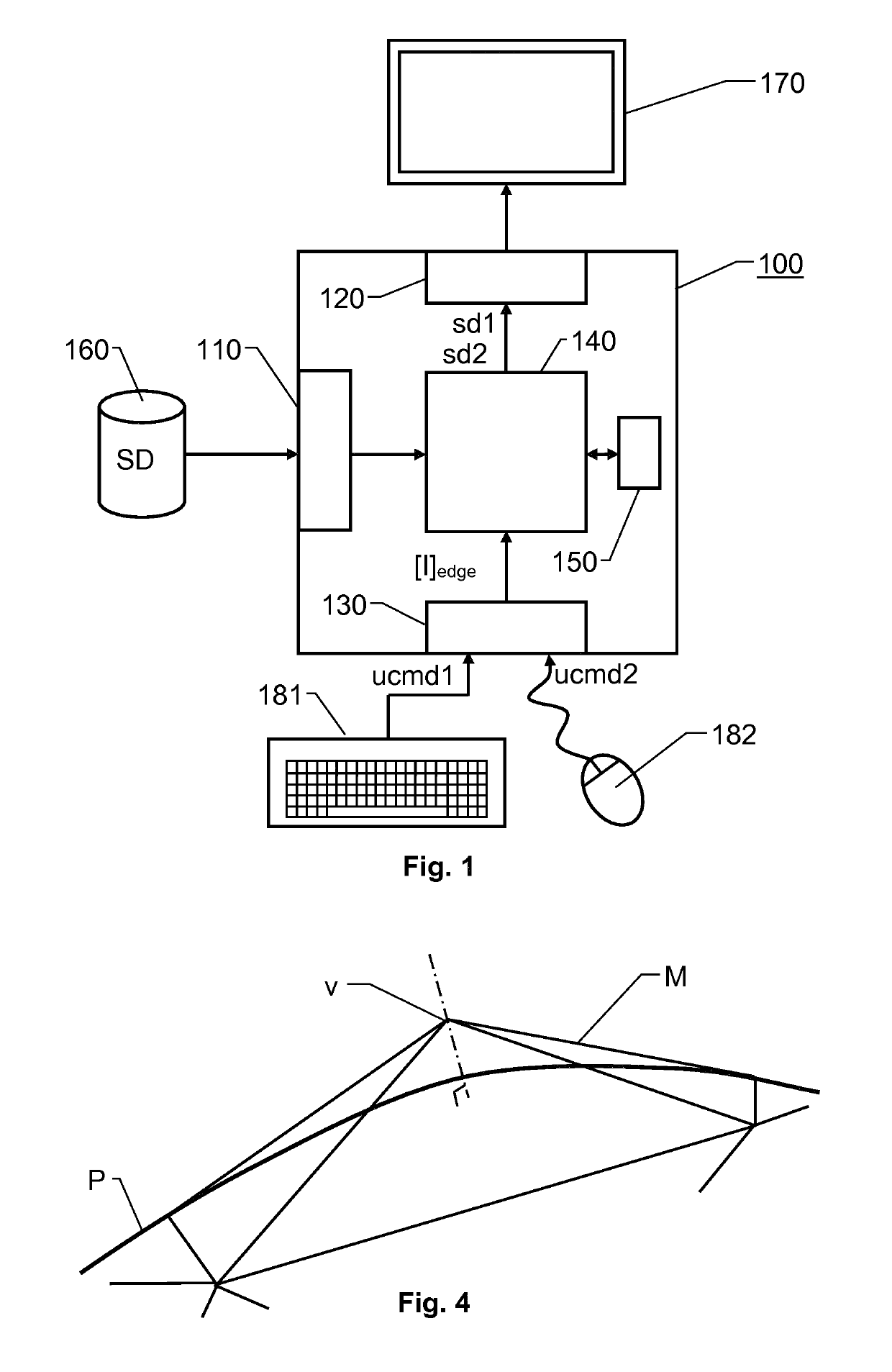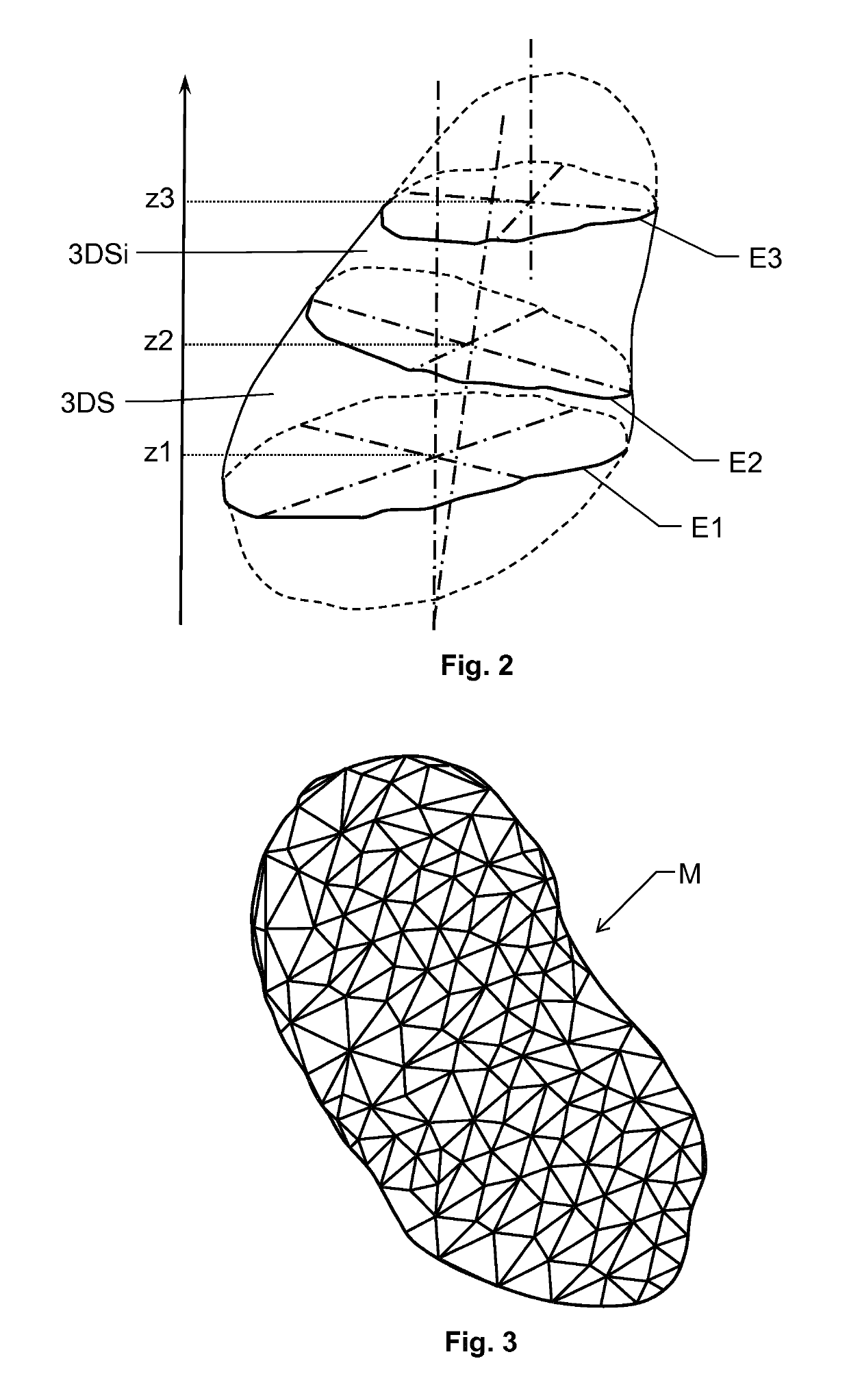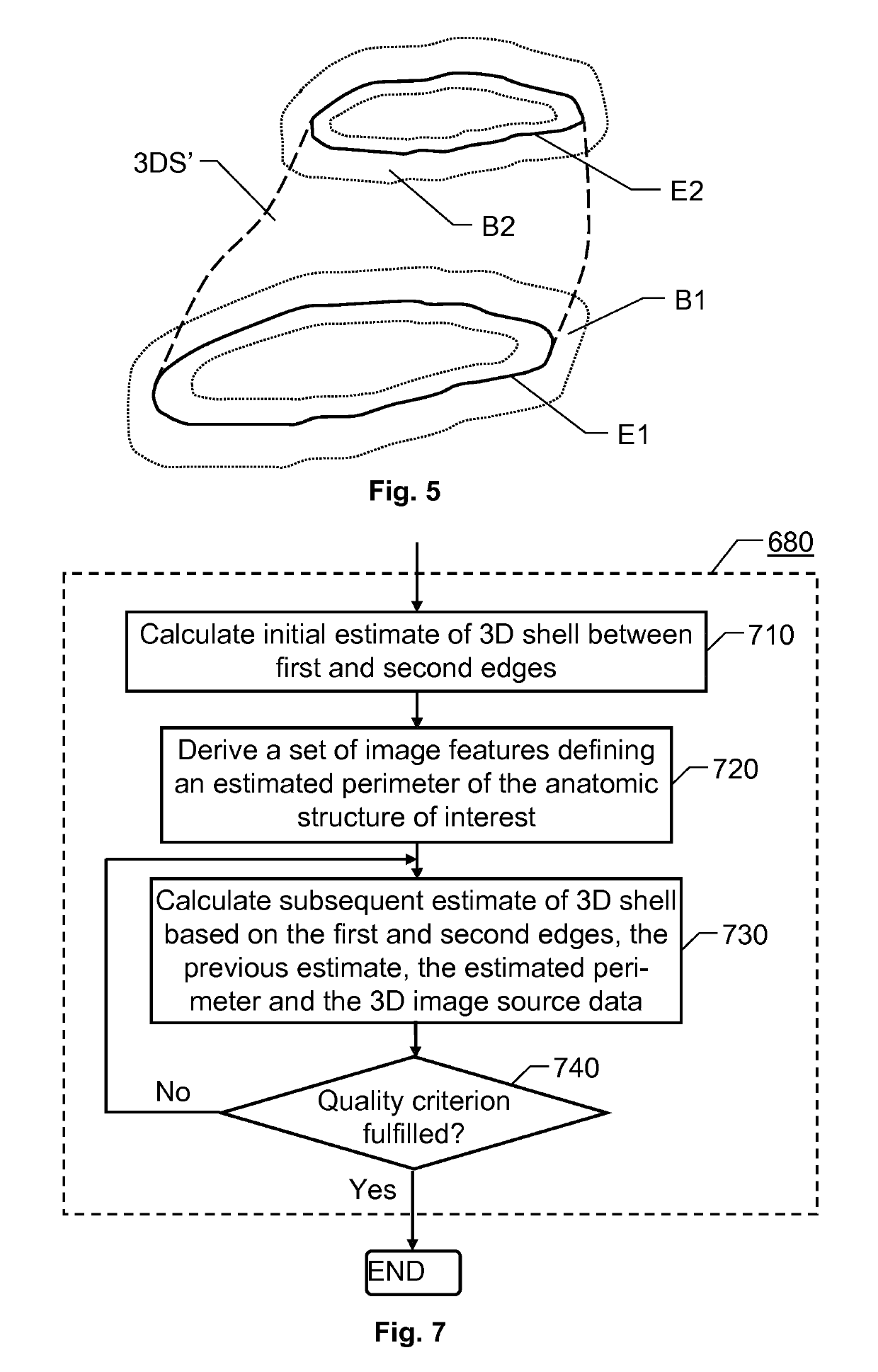Image processing system and method for interactive contouring of three-dimensional medical data
a three-dimensional, interactive technology, applied in image data processing, instruments, computing, etc., can solve the problems of one of the most tedious and time-consuming parts of radiotherapy planning, and achieve the effect of improving geometrical interpolation and low degree of manual intervention
- Summary
- Abstract
- Description
- Claims
- Application Information
AI Technical Summary
Benefits of technology
Problems solved by technology
Method used
Image
Examples
Embodiment Construction
[0031]FIG. 1 shows an overview of an image processing system 100 for contouring three-dimensional medical image data according to one embodiment of the invention. The system 100 includes a processing unit 140 plus first, second and third interfaces 110, 120 and 130 respectively. Preferably, a memory 150 is also included, which stores software for executing the below-described procedure when the software is being run on the processing unit 140. For presentation purposes, FIG. 1 illustrates the interfaces 110, 120 and 130 as separate entities. However, in a practical implementation, two or more of the interfaces may be integrated into a common unit.
[0032]The first interface 110 is configured to enable the processing unit 140 access to source data SD in the form of three-dimensional medical image data that represent an anatomic structure of interest. The source data SD also contains tissues adjoining the anatomic structure of interest. The purpose of the proposed system 100 is to conto...
PUM
 Login to View More
Login to View More Abstract
Description
Claims
Application Information
 Login to View More
Login to View More - R&D
- Intellectual Property
- Life Sciences
- Materials
- Tech Scout
- Unparalleled Data Quality
- Higher Quality Content
- 60% Fewer Hallucinations
Browse by: Latest US Patents, China's latest patents, Technical Efficacy Thesaurus, Application Domain, Technology Topic, Popular Technical Reports.
© 2025 PatSnap. All rights reserved.Legal|Privacy policy|Modern Slavery Act Transparency Statement|Sitemap|About US| Contact US: help@patsnap.com



